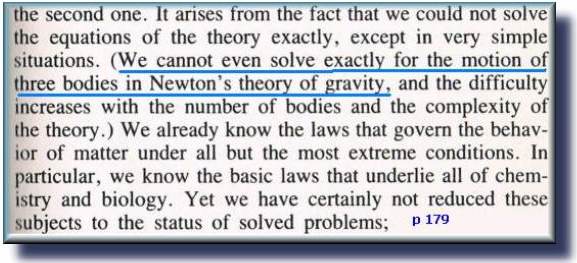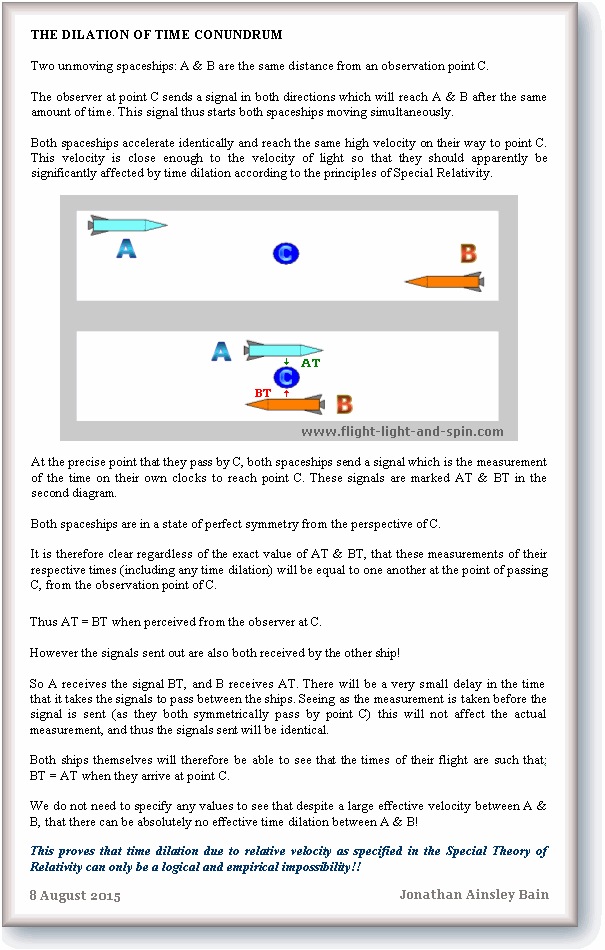your example is almost literally flawed at every point
You fail to realize that not only has nobody ever offered a 3-body solution to relativity,
but that nobody has ever offered such a solution even for the basic Newtonian paradigm.
Consider the quote from Hawking's, 'Brief History of Time'
So when you claim that relativity for 3 bodies is logical, you first must solve for 3 bodies in Newton.
And the only way to do this, is using an evolutionary algorithm in a computer program.
Seeing as though I see no evidence that you have realized that this much simpler problem
'remains unsolved', and you make no attempt to even try and solve it, you miss my points entirely.
(My bad, I probably am not explaining it clearly).
You do make every attempt to keep the debate alive, which is to your credit.
For the record, I HAVE solved the 3-body problem for Newton, a solution which does not become
more difficult 'with the number of bodies' as Hawking tells us.
The only inaccuracy in my solution, is that I would need a computer that calculated at quantum time
for the solution to be perfect. Nonetheless, the inaccuracy is one of computational power, not one of logic.
My Newtonian algorithms are all available here:
http://www.flight-light-and-spin.com/gravity-simulators.htm
(You can contact my host,
www.doteasy.com to ensure that the .exe files are safe)
What you really need to appreciate is that without having solved for 3 bodies in Newton,
you most likely do not have the foundation to attempt for 3 bodies in Einstein.
I would suggest using a computer language with 3 bodies under Newton as being essential
before even attempting to claim anything about understanding Relativity.


